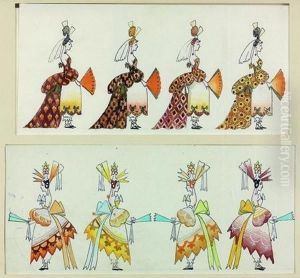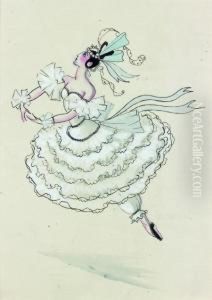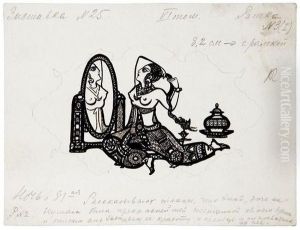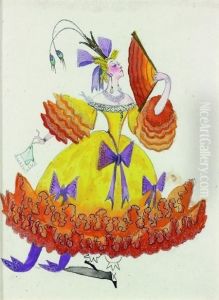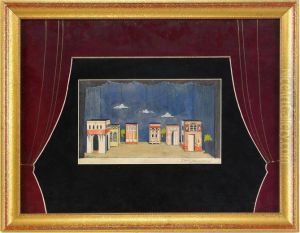Nikolay Alekseevich Ushin Paintings
Nikolay Alekseevich Ushin was a Russian artist and sculptor, born on December 7, 1867, in the city of Tver, Russia. His artistic journey began at the Moscow School of Painting, Sculpture and Architecture, which he attended from 1885 to 1892. Ushin was part of the Russian realist tradition, which was a dominant movement in Russia at the time. He was a contemporary of other important Russian artists and belonged to a generation that witnessed significant social and political changes in the country.
After completing his education, Ushin continued to develop his style, which was primarily focused on sculpture. He became known for his ability to capture the human form with sensitivity and a sense of realism. His works often reflected the lives and characters of ordinary Russian people, which was a common theme among realist artists of the period.
During his career, Ushin participated in various exhibitions, including those held by the Peredvizhniki (The Wanderers), a group of Russian realist artists who formed an artists' cooperative in protest of academic restrictions. His work was well-received, and he gained a reputation for his contributions to Russian art.
The Russian Revolution of 1917 and the subsequent civil war brought significant changes to the art world in Russia. With the rise of the Soviet Union, the state began to dictate the direction of the arts, promoting the style of socialist realism. Ushin, like many artists of his time, was affected by these changes, and his later works may have been influenced by the new political climate.
Nikolay Ushin's legacy is that of a skilled sculptor who was able to capture the spirit of his time through his realistic depictions of people. His works remain as a testament to the rich cultural heritage of Russia and contribute to the understanding of the country's art history. Ushin died on June 24, 1942, during the tumultuous years of World War II. Despite the challenges he faced during his lifetime, his art continues to be appreciated for its craftsmanship and historical value.
